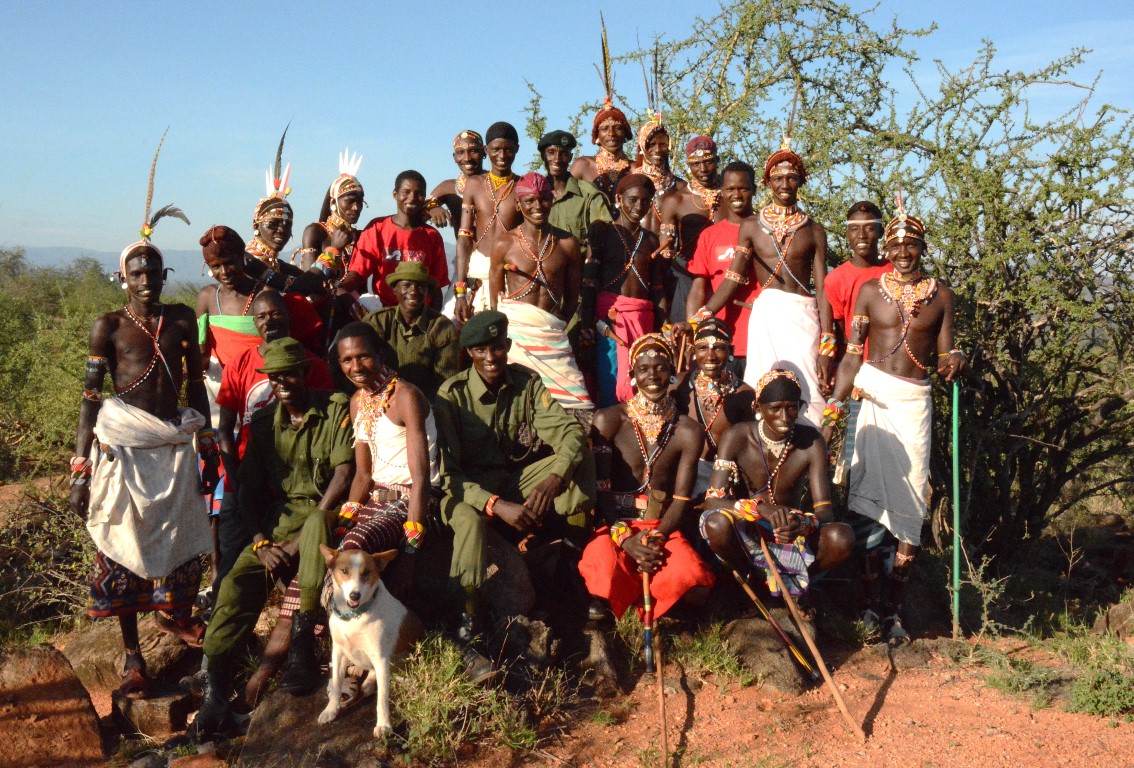- Thomson: We’ve focused on behaviour change – working on perceptions, attitudes, conflict resolution, and education to appeal to all segments of Samburu society.
- We’re trying to harness the mobile connectivity to communicate across a large landscape about lion sightings and conflict incidents and to coordinate our team to respond to those issues.
- I’d like to see basic phone or internet coverage brought into study areas — all sorts of tools can use that grid to communicate and transfer information more effectively.
Conservationists across the globe seek sustainable, effective means of reducing human-carnivore conflict which can result in the death of people, livestock and wildlife, as farmers and herders who lose valuable animals turn against local wildlife and encourage its elimination by poachers or governments. In a New York Times op-ed in response to the outrage over Cecil the lions, Zimbabwean national Goodwell Nzou eloquently explained how human-carnivore conflict manifests itself on the communities that surround protected areas. Conflict with carnivores is consistently ranked among the greatest threats to lions and other iconic predators across Africa.
Paul Thomson is the managing director for Ewaso Lions, a non-profit group operating in northern Kenya working to conserve large carnivores. The group has used several unique approaches to address the conflict between people and carnivores in the Laikipa district of Kenya. These include several mobile phone-based systems to bring a larger group of stakeholders into the conservation effort and working with Silicon Valley entrepreneurs to develop a new predator deterrent light system.
We talked with Paul about Ewaso’s strategy for addressing human-carnivore conflict and how he sees technology fitting into community-based conservation efforts.
Answers have been edited for clarity and length.
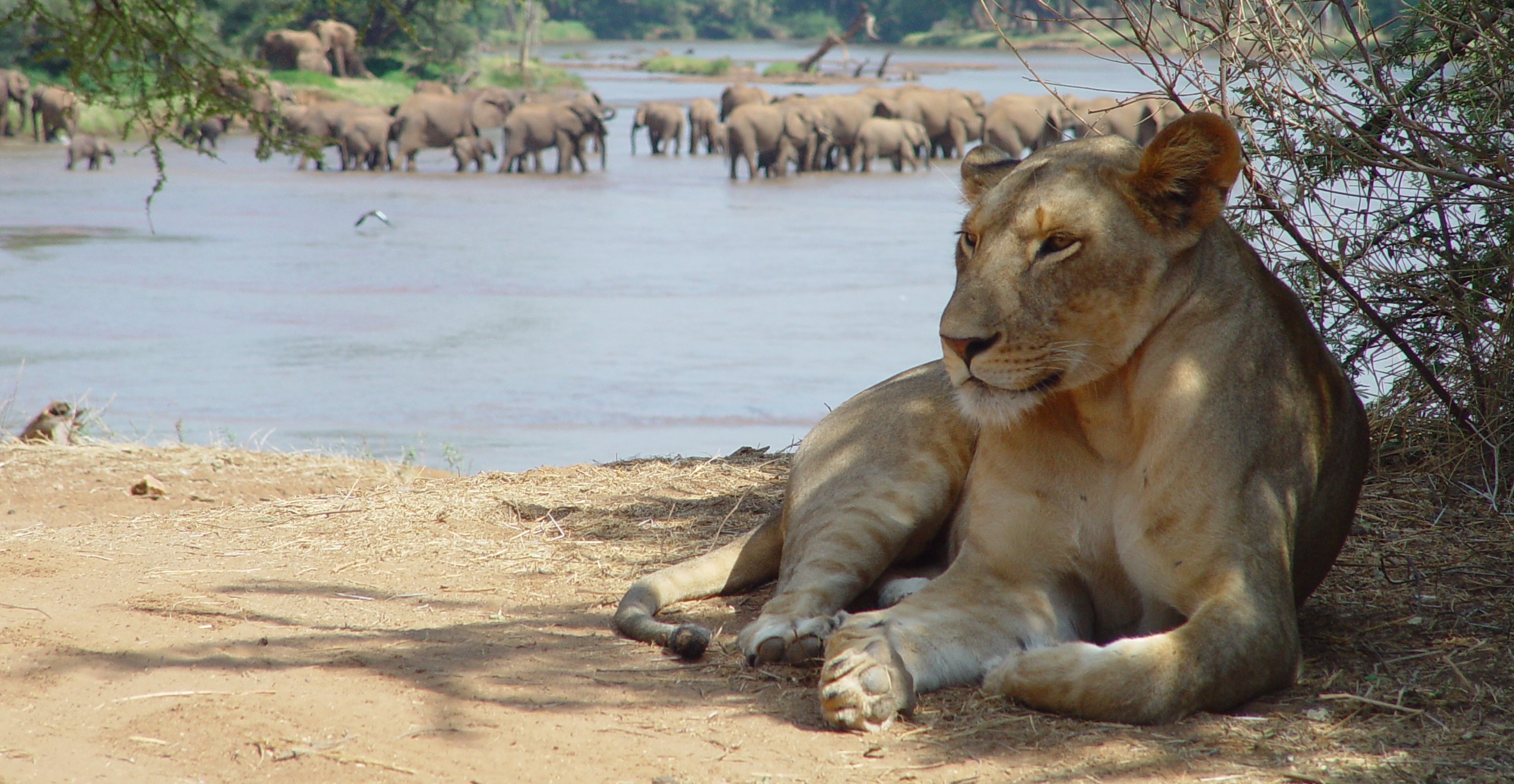
WildTech: Can you give us a brief overview of Ewaso Lions and the kinds of issues you work on?
Paul Thomson: Ewaso Lions is a community-based conservation organization that was started in 2007 and is based in northern Kenya in the Samburu and Laikipia regions. Lions are the flagship species we’ve chosen to focus on, but we work with other carnivore species like hyenas, leopards and wild dogs. We’ve taken a two-pronged approach to lion conservation in the region. We do research, but we also do a lot of community outreach and education programs to address the prevalence of human-lion conflict in this landscape. Our mission is to create co-existence between people and large carnivores, and we want to do this by putting people at the forefront of our conservation efforts.
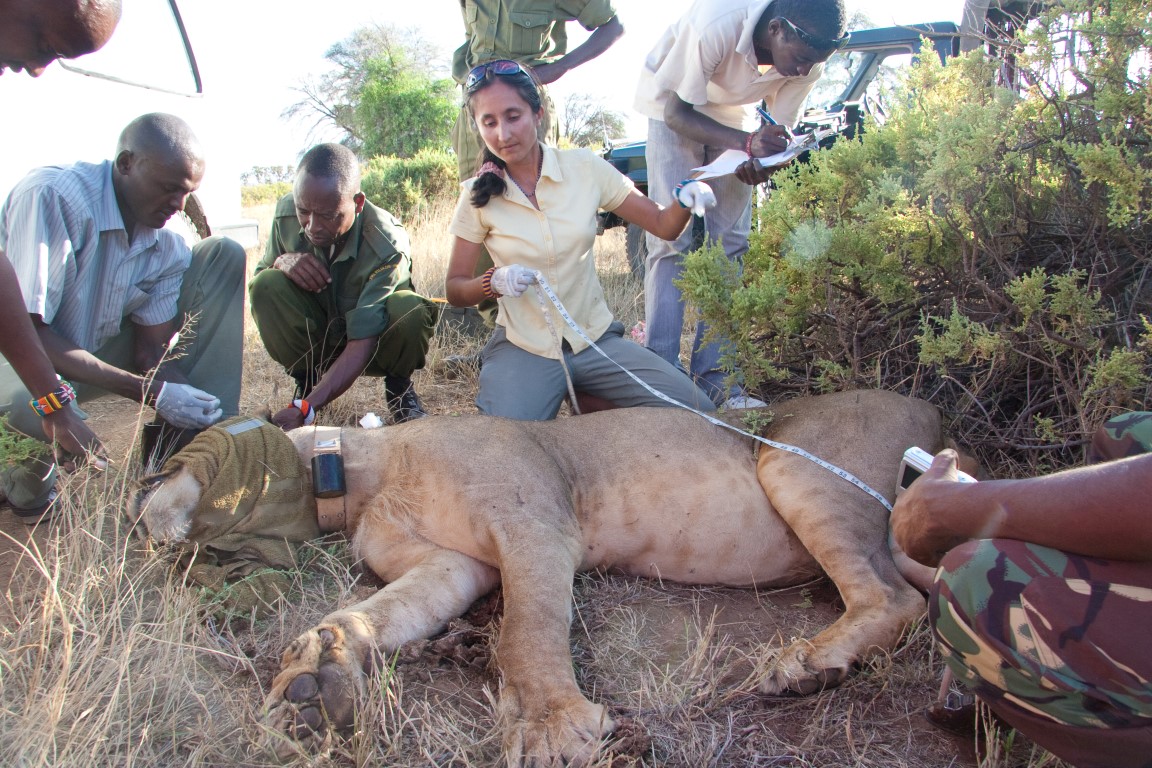
WildTech: What drew Ewaso to focus on lions as the flagship species?
Paul Thomson: We realized that lion populations in northern Kenya were declining pretty drastically, and the stats across the continent for lions are still pretty grim; we’ve lost 90% of the continental population in the last 75 years. In Kenya, there are fewer than 2,000, and the country is losing about 100 lions a year as a direct result of retaliation by people. At the crux of this issue is people competing directly with lions over shared resources. This means habitat and space, but also food sources. Lions are eating people’s livestock, and the people are responding by either shooting, spearing or poisoning them.
WildTech: What kind of community programs and research has this involved so far?
Paul Thomson: So, to address this conflict we set up a suite of community-focused programs, and one of the first things to come out of this was a program called Warrior Watch. We worked with Samburu warriors to create a network of lion conservationists, based on the old poacher-turned-protector model, which could be spread out across the study area. Additionally, we do a lot of research, like tracking lions’ movements to see how they’re utilizing the landscape and being affected by human presence, as well as ongoing monitoring of the populations and individual lions in our area.
WildTech: How effective have some of these non-tech methods like Warrior Watch been for Ewaso?
Paul Thomson: I think some of our greatest successes so far haven’t been tech-based. We’ve focused a lot on behaviour change – working on perceptions, attitudes, conflict resolution, and education. We want to implement really strong programs that appeal to all the segments of Samburu society. We started with the warriors and saw that we gained some great partnerships. Then we took that model and applied it to other groups – elders, women, and children – so in this way we’re trying to work with everyone in the society and really create that engagement at the community level.
I think that more advanced technology in conservation is something we’re just starting to explore and see what is possible. Part of that is networking with other conservationists and with people in the tech industry to see if they can lend some of their expertise. And the other part is finding ways for that technology to fit smoothly into existing structures.
WildTech: What types of technology is Ewaso Lions using now?
Paul Thomson: We have two main areas we’re exploring with technology. One is developing predator deterrents, like Lion Lights, that protect people’s livestock. The other area, which we’ve been leveraging kind of unknowingly from the beginning, would be mobile technology. We’re really trying to harness the mobile connectivity in the area as a way to communicate across a large landscape about lion sightings and conflict incidents and to coordinate our team to respond to those issues.
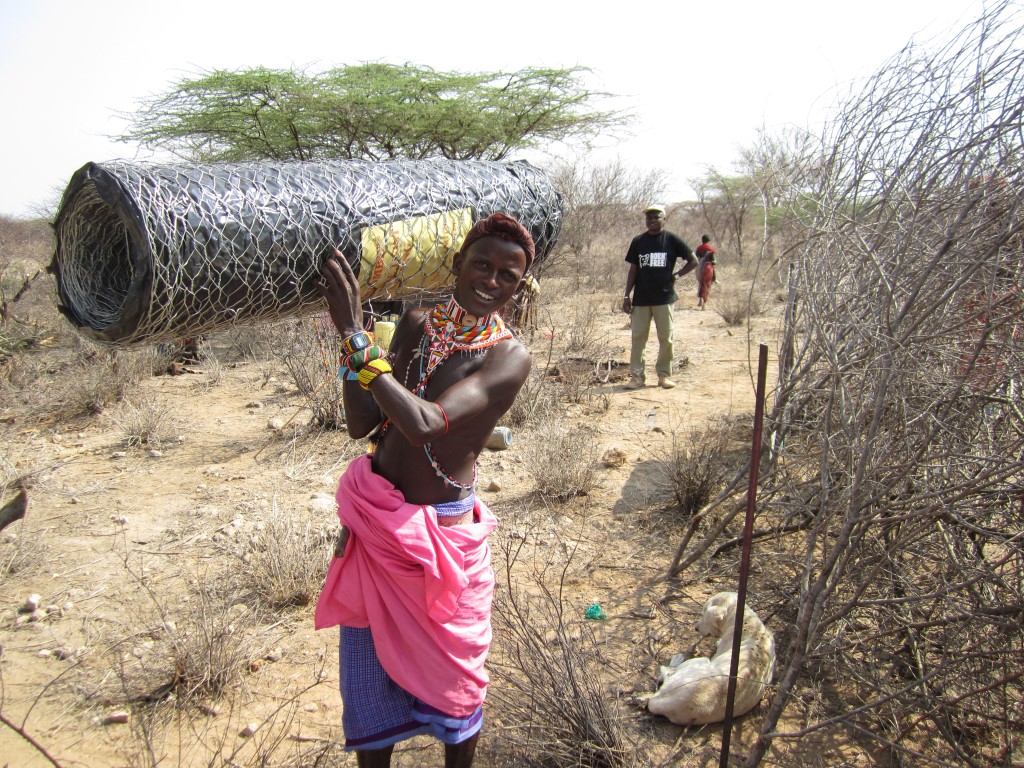
WildTech: Could you elaborate more on how Ewaso is using mobile communications for its projects?
Paul Thomson: We started off using phones as an important tool for our general communications, but then we took that to the next level with the launch of our Lion Watch program. Lion Watch is our attempt to close the gap between the safari industry and conservation and find a way to leverage safari guides, who have the presence on the ground day to day, to turn all those wildlife sightings into usable data for conservation.
To start out, we trained a select group of guides in our area on how to identify individual lions and taught them about lion conservation and the threats facing the population. Then we equipped each guide with a smartphone and a custom app that was developed with a company out of the UK called Wild Knowledge. With the app, safari guides can collect data like lion location, numbers, sex, behavior and take photos that were linked to these entries. So while they are out on their normal jobs, they can gather data for us. In this way, we are able to create a citizen army that could cover a much larger area than we could by ourselves.
WildTech: Would you say that it’s been a success so far?
Paul Thomson: We’ve had 600 entries in the last year, and it’s proving to be popular amongst the safari guides and tourists. What I like about it is that it actually has two benefits. We’re collecting lion numbers and movements across our study area so we can look at changes in pride dynamics and create a map of lion numbers and movements. And it’s also creating an increased interest among the guides. It empowered them to be better at their jobs, which sparked additional interest from tourists, and guides have even reported getting larger tips as a result. And of course it’s giving tourists an inside look at the conservation work going on.
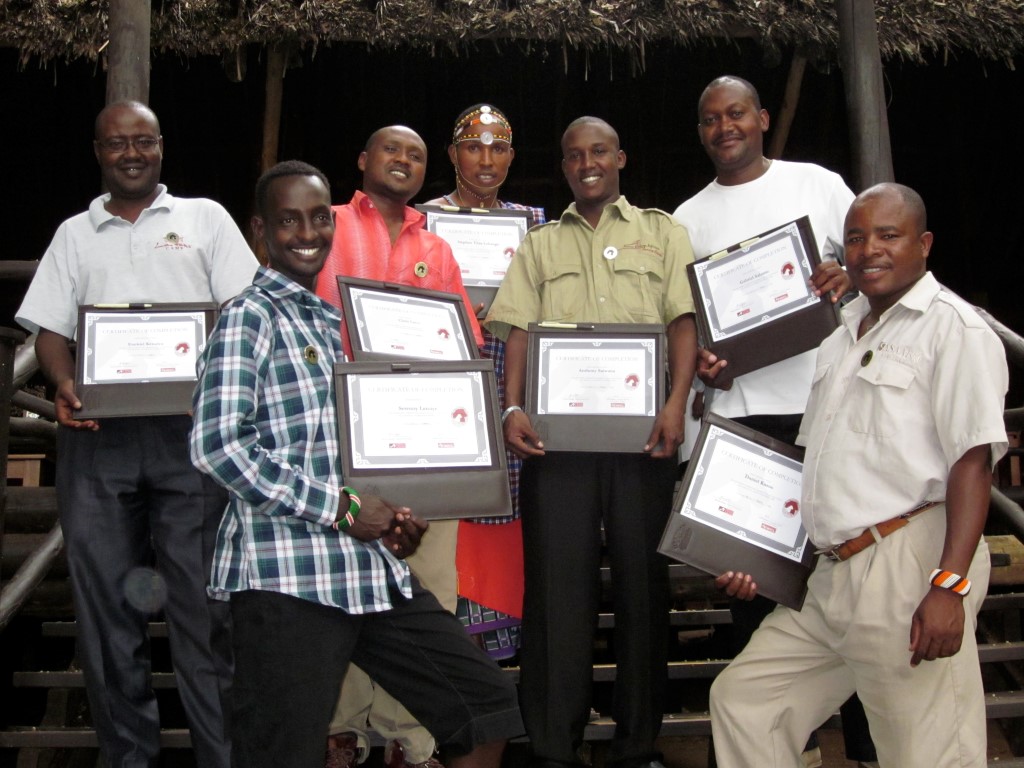
WildTech:A big part of developing these tech applications for conservation seems to be about meeting the right people at the right time. How were you able to connect with the Wild Knowledge Team?
Paul Thomson:It was very opportunistic. When Shivani, our program lead, was working on her PhD at Oxford, she bumped into these guys and started chatting; they were developing a new app and wanted her to field-test it. Bumping into them led to this union between conservation and tech, and I think that’s the way a lot of these partnerships happen. With predator deterrents too, we only started that project because we were introduced to a developer and started throwing ideas around. It would be great if there were a way to be more proactive in creating those connections and random interactions.
WildTech:You mentioned to us that Ewaso Lions is developing a predator deterrent system similar to Lion Lights. I’d be curious to know what advice you would give to someone attempting to create a new conservation device. What goes into building a piece of technology from scratch?
Paul Thomson: From the beginning, it’s really important to set expectations about the device, and what the long-term plans are for implementation. Also, discuss things like ownership and intellectual property. Don’t be afraid to map those things out from the get-go, because they’re going to come back around later. It’s also really hard to convey the problems on the ground to people who are very removed from those conditions, so it’s really important to communicate the context in which the device will be used. And of course be ready for unexpected obstacles, but I think conservationists more than anyone are well suited for those hurdles.
WildTech:Did you change how you were thinking about human-carnivore conflict after those initial conversations? Did anyone say “why don’t you just do this..?”
Paul Thomson: I know exactly what you mean. The problem, which was actually highlighted by these discussions, is that there is no simple answer. There’s no silver bullet. It has pushed us to think about how we can approach this problem from more angles and think about it in new ways.
It’s really exciting to brainstorm and work with people from other industries because they bring a different way of thinking and creativity. It’s easy as a conservation biologist to get tunnel vision when you work on a problem for a long time. Bringing in these big thinkers and entrepreneurial types was helpful to see things from a different perspective.
WildTech:That brings us to the question I wanted to ask next. Human-carnivore conflict is, at its root, a battle over space and resources. How do you see tech fitting into this overarching problem?
Paul Thomson: I think long-term viability of the technology has been a big thing for us. Initially, we pitched all sorts of ideas with really complicated technology. That may make sense if you’re based in San Francisco and you have unlimited power supplies and resources, but the tech has to fit the context. The other consideration for a long-term solution was that we didn’t want to introduce some sort of technology that’s completely out of touch with local culture and the way they’re comfortable doing things. Especially for human-wildlife conflict, where people are heavily involved, the scale of the technology has to be compatible to the local context and be community based. That’s a big thing for us.
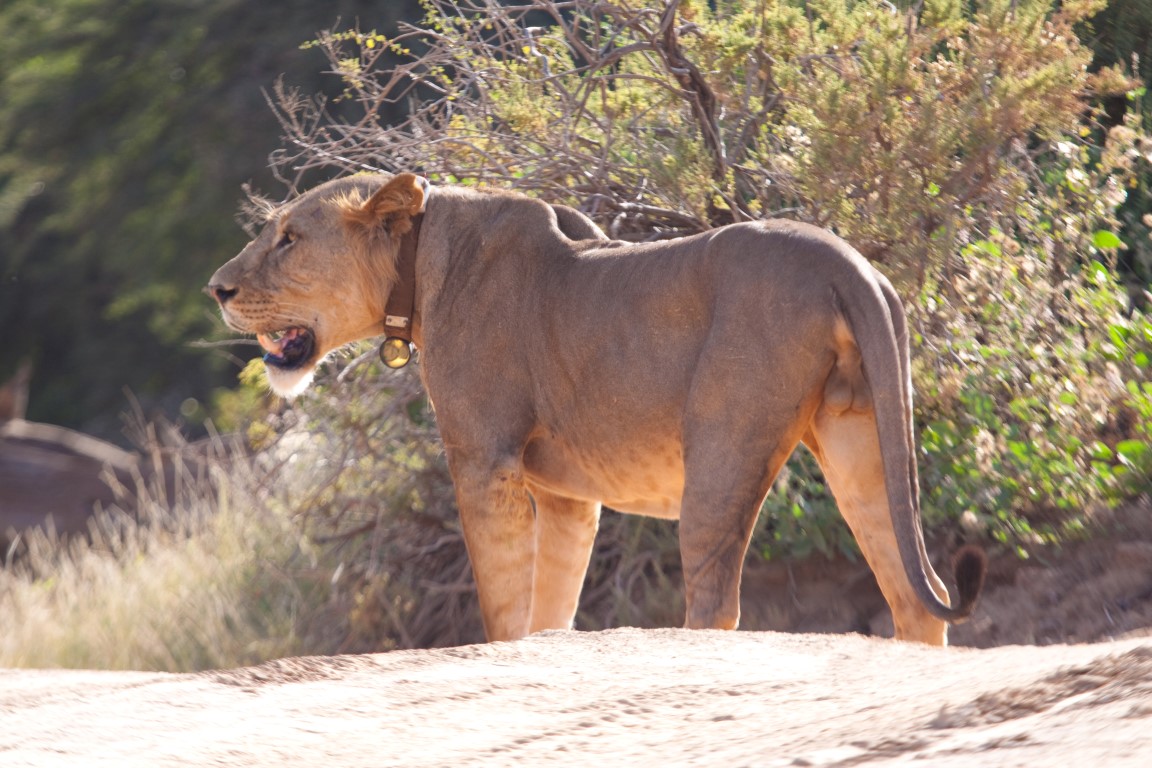
WildTech: So to sum up, don’t try to use technology just for the sake of using technology?
Paul Thomson: Yes! Absolutely. That’s why I have a pretty good feeling about Lion Watch. It’s leveraging a structure that’s already there, and giving a direct benefit to the people involved. That’s the ideal, to find a way to blend technology so that it supports existing systems and has a better chance of being sustained.
WildTech: So you’ve been working on human carnivore conflict for awhile now. How has the use of technology for this problem developed over that time?
Paul Thomson: Technology in large carnivore conservation has been very slow to adapt. If you look at the oldest use of tech, it’s radio and GPS collars to track lion movements. But the technology on the collars has been slow to change, and there are still high failure rates and problems with peripheral equipment like antennas and base stations. Battery life is still a big issue, and some people don’t like the fact that these collars are relatively large and very visible.
I think data transmission in real time for collars can also improve. You can end up losing lots of data when the collars malfunction. It would be great to see more collars that can collect other types of data too, like speed and energy expenditure. We’re about to enter the era of wearable tech, and here’s something that would be awesome to have for wildlife. If lions could have some sort of giant Fitbit collecting information and then display that data in an easily interpretable and readable way, you could make analysis much more comprehensive for field teams.
[Editors note: A story on biologging collars was recently published on wildtech.mongabay. You can read it here]
WildTech: What about in general? What kinds of technology do you think we should be focusing on going forward, and what are the key components to make this work in the field?
Paul Thomson: In general, I do think mobile tech is the way forward. It’s very useful around a range of different activities, from anti-poaching to wildlife monitoring, and even internal teamwork. The problem of course is that there’s no phone coverage in 90% of our study area. I’d like to see people start more basic, and get phone or internet coverage into study areas, and then from there you can develop all sorts of tools which use that grid to communicate and transfer information more effectively.
But whatever the tech is, I’d want it to have several key features. Reliability and durability is king in the field. We want things that don’t malfunction and don’t break down after 6 months. That is the number one priority for us. It also needs to be user-friendly and adaptable across different landscapes and species so it can integrate into people’s daily lives and make it easy for them to contribute to our work. It’s been nice to have a team that can bring new ways of thinking to the table, so it would be great to see the more innovative and creative thought processes of the tech industry coming into conservation.
